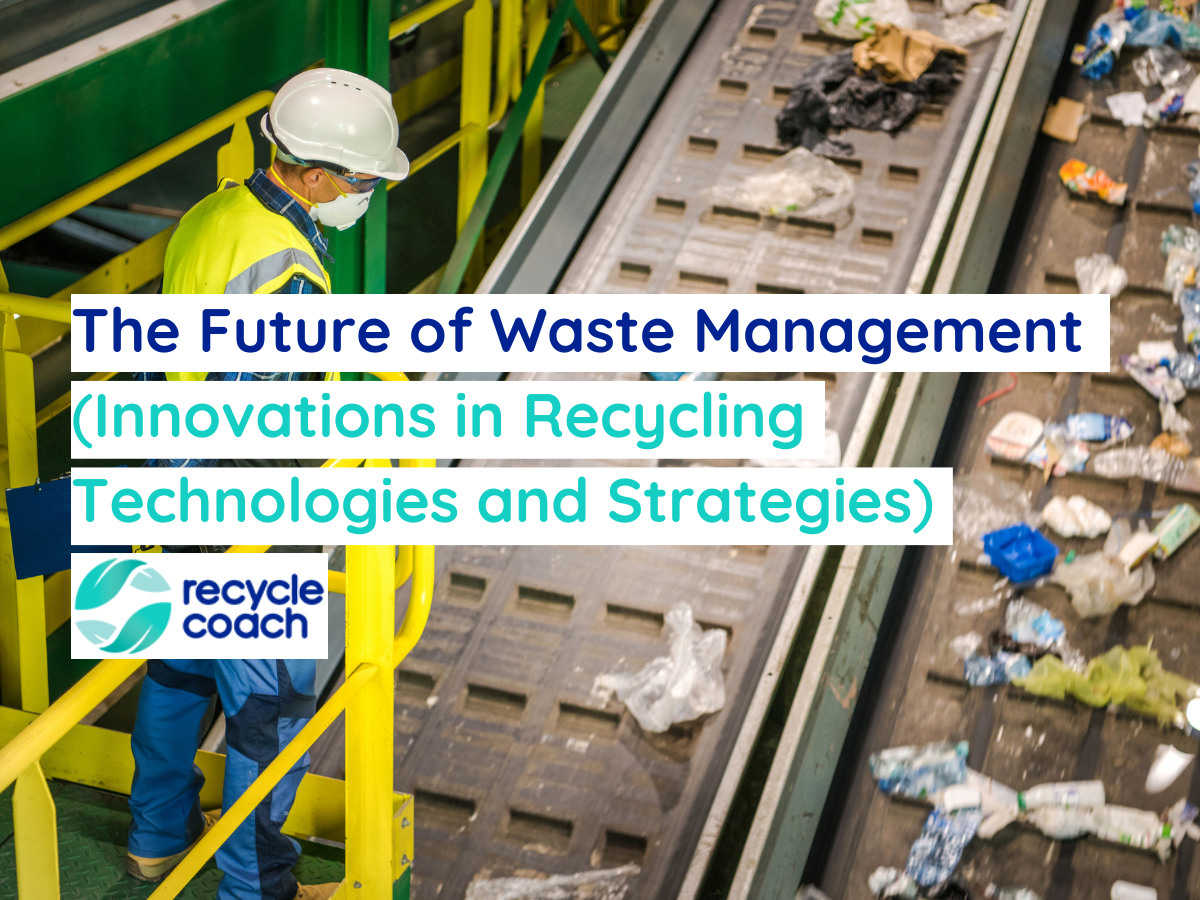The Future of Waste Management: Innovations in Recycling Technologies and Strategies

The world is grappling with an ever-increasing waste management problem as the global population continues to grow. Waste disposal methods, such as landfilling and incineration, contribute significantly to environmental pollution and climate change. There is an urgent need for innovative recycling technologies and strategies to address this issue. This article explores the latest advancements in recycling technologies, circular economy principles, zero waste strategies, and the role of government and consumer behavior in shaping the future of waste management.
The Current State of Waste Management
Globally, around 2.01 billion tonnes of municipal solid waste is generated annually, with only 13.5% being recycled (World Bank, 2018). The environmental consequences of waste disposal are alarming, with landfilling releasing harmful greenhouse gases, and incineration causing air pollution. Existing recycling methods have limitations, such as high operating costs, low efficiency, and limited material recovery. Additionally, in 2002, the World Health Organization (WHO) conducted a research study reviewing the medical waste disposal management methods of 22 countries, revealing that improper methods of biomedical waste management were used in 18% to 64% of the cases. Consequently, there is a pressing need for innovative recycling technologies and strategies to address the challenges of both municipal and medical waste management.
Advanced Recycling Technologies
Chemical recycling, a process that breaks down plastic waste into its basic components, has emerged as a promising solution. This technology allows for the recycling of previously unrecyclable plastics and can be used to produce high-quality raw materials for new products. Despite its potential, chemical recycling is not without challenges, such as high energy consumption and potential pollution risks (Ellen MacArthur Foundation, 2019).
Robotic waste sorting is another innovation that utilizes artificial intelligence and machine learning to improve waste separation efficiency. For example, the company ZenRobotics has developed a robotic waste sorting system capable of processing up to 70 metric tons of waste per hour (ZenRobotics, 2021).
Biodegradable and compostable materials are also being developed to reduce waste generation. Innovations in eco-friendly packaging, such as edible food containers and biodegradable plastics, are gaining traction. The use of biotechnology, such as the development of fungi-based packaging materials, is also on the rise (The Guardian, 2020).
Circular Economy and Waste Management
The circular economy model emphasizes the importance of designing products and systems that minimize waste and resource use while maximizing value creation. By implementing circular economy principles in waste management, materials can be kept in use for longer periods, reducing waste generation and promoting resource efficiency.
The city of Amsterdam, for example, has committed to becoming a fully circular city by 2050, implementing strategies such as promoting recycling and waste reduction, supporting sharing economy initiatives, and fostering circular design (City of Amsterdam, 2020).
Zero Waste Strategies for Communities and Businesses
Zero waste strategies aim to minimize waste generation and resource use by designing waste out of products and systems. Several communities and businesses have successfully implemented zero waste strategies, such as Kamikatsu, a small Japanese town that has achieved an 80% recycling rate (CNN, 2016).
Key factors for implementing a successful zero waste strategy include setting clear targets, engaging stakeholders, providing incentives, and investing in infrastructure and education.
Policy and Regulatory Measures to Promote Recycling Innovations
Governments play a crucial role in fostering innovation in waste management and recycling. Policies such as Extended Producer Responsibility (EPR), which holds manufacturers accountable for the end-of-life management of their products, can incentivize the development of recycling technologies and circular business models (OECD, 2021).
Best practices for future policy development include setting ambitious recycling targets, incentivizing research and development, and promoting cross-sector collaboration.
The Role of Consumer Behavior in Shaping the Future of Waste Management
Consumer choices significantly impact waste generation, and promoting sustainable consumption is essential for reducing waste. Strategies to encourage sustainable consumption include providing information on product lifecycle impacts, offering incentives for eco-friendly products, and supporting education and awareness campaigns.
A study by McKinsey & Company (2020) revealed that consumers are increasingly prioritizing sustainability, with 57% of respondents stating they have made changes to their consumption habits to reduce their environmental impact. This shift in consumer behavior can drive businesses to adopt more sustainable practices and invest in innovative waste management solutions.
Conclusion
The future of waste management lies in the adoption of innovative recycling technologies, the implementation of circular economy principles, and the promotion of zero waste strategies. By embracing these approaches, we can reduce waste generation, minimize environmental pollution, and contribute to a more sustainable future.
Collaboration among governments, businesses, and consumers is crucial to drive the adoption of innovative waste management practices. As we move forward, it is essential that we invest in research, develop supportive policies, and raise awareness to ensure that waste management and recycling innovations become an integral part of our global strategy to combat climate change and preserve our planet’s resources.
Sources:
- World Bank (2018). What a Waste 2.0: A Global
Snapshot of Solid Waste Management to 2050. Retrieved from: https://www.worldbank.org/en/news/infographic/2018/09/20/what-a-waste-an-updated-look-into-the-future-of-solid-waste-management - Ellen
MacArthur Foundation (2019). The New Plastics Economy: Rethinking the
future of plastics & catalysing action. Retrieved from: https://www.ellenmacarthurfoundation.org/assets/downloads/publications/NPEC-Hybrid_English_22-11-17_Digital.pdf - ZenRobotics
(2021). Robotic Waste Sorting. Retrieved from: https://zenrobotics.com/robotic-waste-sorting/ - The Guardian
(2020). The future of packaging: from fungi to pineapple leaves. Retrieved
from: https://www.theguardian.com/business/2020/nov/29/the-future-of-packaging-from-fungi-to-pineapple-leaves - City of
Amsterdam (2020). Amsterdam Circular 2020-2025: Circular Economy Strategy.
Retrieved from: https://www.amsterdam.nl/en/policy/sustainability/circular-economy/ - CNN (2016).
The Japanese town that’s aiming for zero waste by 2020. Retrieved from: https://edition.cnn.com/2016/08/31/asia/japan-town-zero-waste-kamikatsu/index.html
Guest Bio
Wes Sonnier: President of BioMedical Waste Solutions. Specialist in OSHA Compliance, diseases, infection, and patient safety. Over 17 years
expertise at sustainable medical waste disposal management.